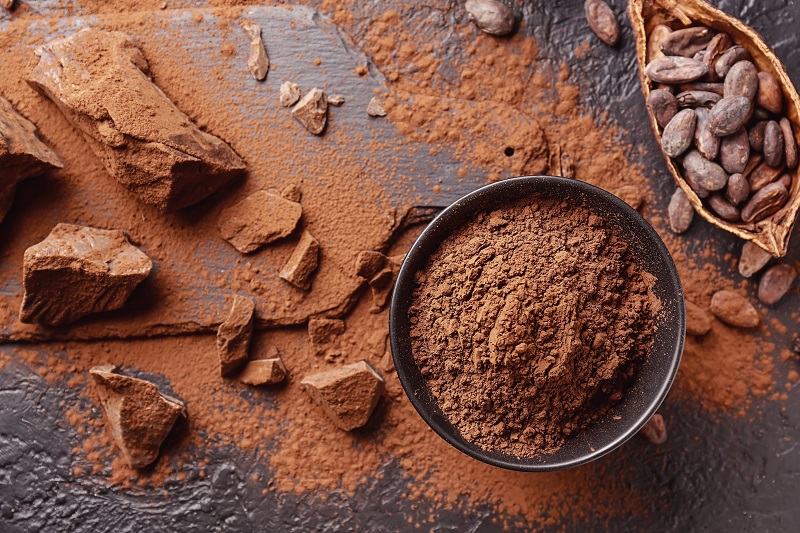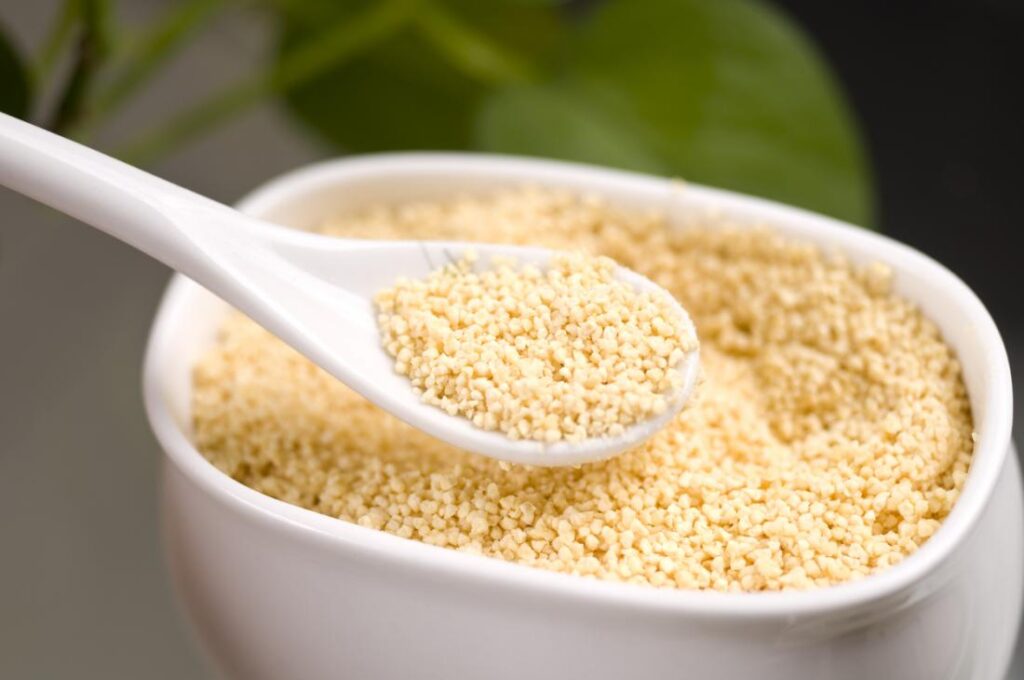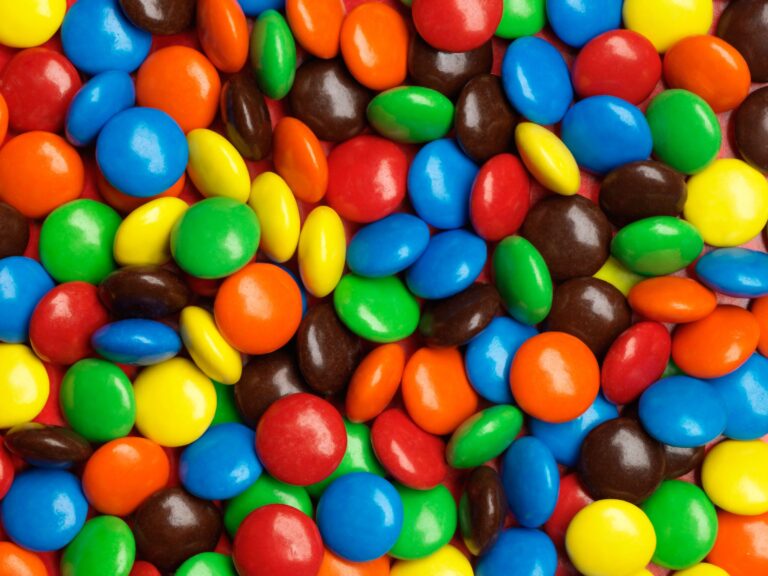Candy is a sweet food product made from sugar, flavorings, and other ingredients such as chocolate, nuts, or fruit. It is eaten as a treat or dessert.
Types Of Chocolate
There are several types of chocolate, each with its unique characteristics:
1. Dark chocolate: Dark chocolate is made with a high percentage of cocoa solids and butter and has a rich, intense flavor. It typically contains less sugar than other types of chocolate and may have a slightly bitter taste.
2. Milk Chocolate: Milk chocolate is made with milk powder or condensed milk, giving it a creamier taste and a lighter color than dark chocolate. It has a sweet flavor and is often popular with people who prefer a milder chocolate taste.
3. White Chocolate: White chocolate is made with cocoa butter, sugar, and milk, but it contains no cocoa solids. As a result, it has a sweet and creamy flavor and a pale ivory color. Some people debate whether white chocolate should be considered a true chocolate because it lacks cocoa solids.
4. Ruby Chocolate: Ruby chocolate is a relatively new type of chocolate from specially processed “ruby” cocoa beans. It has a natural pink color and a slightly fruity taste, making it distinct from other types of chocolate.
5. Unsweetened Chocolate: Also known as baking chocolate, unsweetened chocolate contains only cocoa solids and cocoa butter, with no added sugar. It has a very intense and bitter flavor, and is primarily used in baking.
Ingredients In Chocolate
Each type of chocolate has its unique flavor profile, and they are used in so many culinary applications, from confections and desserts to savory dishes.
Chocolate typically contains the following main ingredients:
1. Cocoa solids

These are the nonfat components of cocoa beans that have components into a liquid or paste. Cocoa solids contain the flavors and colors of chocolate and are an ingredient in determining the taste and color of the final product.
2. Cocoa butter

This is the fat component of the cocoa bean. It provides a creamy texture and smooth mouth to chocolate.
3. Sugar

Chocolate sweetened with sugar to balance the natural bitterness of cocoa and enhance its flavor.
4. Milk

In the case of milk chocolate, milk powder or condensed milk is added to provide a creamy and milder flavor.
5. Lecithin

This is a natural emulsifier derived from soybeans or sunflower seeds, which helps to blend the cocoa and cocoa butter and prevent them from separating.
6. Vanilla

Vanilla is often added as a flavoring to enhance the overall taste of the chocolate.
Differences Between Chocolate and Other Types Of Candy
One of the main differences between chocolate and other types of candy is that chocolate is typically made from cocoa solids and cocoa butter, giving it a rich and complex flavor, while other types of candy are often made primarily from sugar and flavorings.
Additionally, chocolate has a smooth and creamy texture due to cocoa butter, whereas many other types of candy have a more chewy or hard texture.
Furthermore, chocolate is often associated with specific varieties such as dark, milk, and white chocolate, each with its distinct taste and texture. Various types of candy come in a wide range of flavors and textures, including gummies, hard candies, and sour candies.
Health Aspects Of Eating Chocolate
From a health perspective, chocolate, in particular, is known for its potential health benefits due to its high cocoa content, many candies are considered purely indulgent and are high in added sugars and artificial ingredients.
Eating chocolate in moderation may have some health benefits. Dark chocolate, in particular, contains antioxidants such as flavonoids, which can help reduce inflammation and improve blood flow. Additionally, dark chocolate has been associated with potential benefits for heart health, including lowering blood pressure and reducing the risk of heart disease.
It’s important to note that while dark chocolate can offer certain health advantages, it should still be consumed in moderation due to its calorie and sugar content. Overconsumption of chocolate, especially varieties with high sugar and fat content, can lead to weight gain and other health effects.
It’s always best to choose high-quality dark chocolate with a high cocoa content (70% or higher) and consume it in moderation as part of a balanced diet.
Chocolate holds significant cultural importance as a beloved candy in many societies around the world. It is often associated with celebrations, romance, and indulgence. For example, chocolate is commonly exchanged and enjoyed as gifts during holidays, such as Valentine’s Day and Christmas.
Additionally, chocolate plays a role in various cultural rituals and traditions, such as chocolate Easter eggs and coins during Hanukkah.
Furthermore, chocolate is often used as a comfort food and is associated with feelings of pleasure and relaxation. Many people enjoy chocolate as a way to treat themselves and experience a moment of joy.
Cultural Significance Of Chocolate As A Candy
In some cultures, chocolate is also used in traditional culinary recipes and is deeply ingrained in local cuisines.
For example, chocolate is an ingredient in Mexican mole sauce and is also used in various desserts and beverages in Central and South American cuisines.
Chocolate has become ingrained in the cultural fabric of many societies, and its significance extends beyond its role as a simple confection.
Read Also:
- Is Salt A Spice?
- Is Kiwi A Citrus Fruit?
- Is There A Difference Between Candy Thermometer And Meat Thermometer?
Conclusion
The topic “Is chocolate a candy?” encompasses various aspects that shed light on the nature of chocolate and its classification as a candy.
Through exploring the definition of candy, the types and ingredients of chocolate, the differences between chocolate and other types of candy, the health aspects of consuming chocolate, and the cultural significance of chocolate as a candy, it becomes apparent that chocolate can indeed be categorized as a type of candy.
While chocolate possesses distinct characteristics and cultural significance, it aligns with the general definition of candy as a sweet food product enjoyed as a treat or dessert.
The multifaceted nature of chocolate as a confectionery and its widespread peal contribute to its recognition as a candy in the culinary and cultural context.



